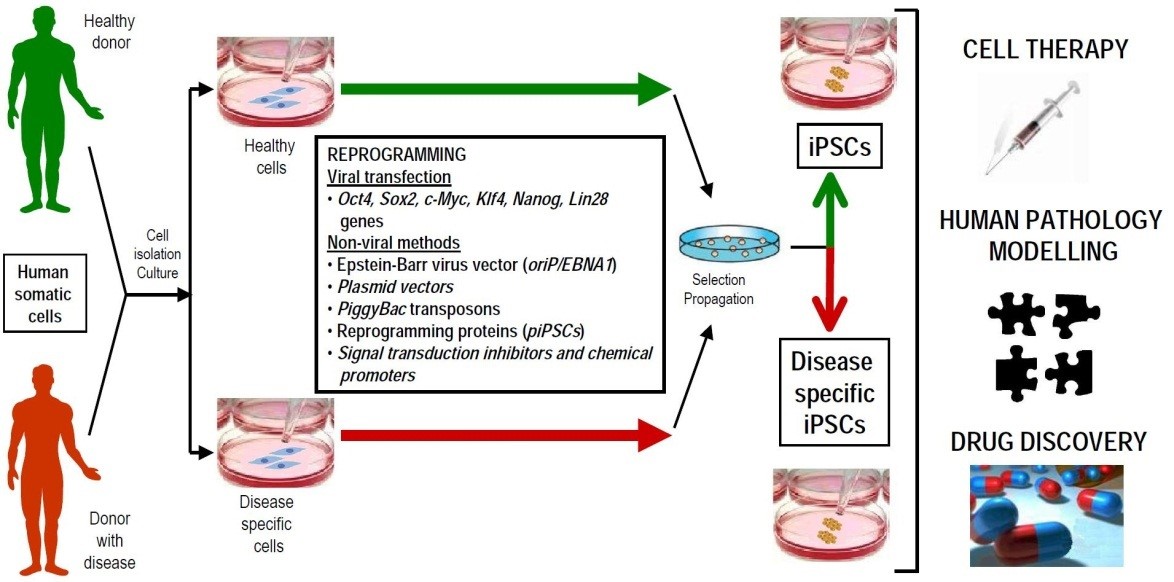In addition to some cancers, neurological diseases, cardiovascular diseases and metabolic diseases, induced pluripotent stem cell (iPSC) technology is also used in other diseases such as infectious diseases, physical and chemical damage disorders.
Infectious diseases are caused by pathogenic microorganisms, such as bacteria, viruses, parasites or fungi. These diseases can be spread directly or indirectly from person to person. Many organisms live in and on our bodies. They are usually harmless and even useful. But under certain conditions, you may be infected by eating contaminated food or water or by contacting organisms in the environment. Symptoms and signs vary depending on the organism causing the infection, but usually include fever and fatigue. Mild infections may respond to rest and home treatment, while some life-threatening infections may require hospitalization.
Physical damages include injuries caused by mechanical trauma, heat and cold, electrical discharge, pressure changes, and radiation. Mechanical trauma refers to an injury to any part of the body after the body is hit, crushed, cut or penetrating. Complications of mechanical trauma are usually related to fractures, bleeding and infection. They do not necessarily have to appear immediately after the injury. Slow internal bleeding may cover-up for several days and eventually cause an emergency.
Chemical damage is mainly caused by poisons, which refers to any substance that can cause illness or death when ingested in small amounts. This definition does not include many substances that can cause harm when ingested in large amounts. For example, even oxygen and glucose, which are vital to life, are toxic to cells when administered in high concentrations.
The latest biotechnological breakthroughs in cell reprogramming and iPSC generation have completely changed the method of studying human disease mechanisms and testing new drugs. This method can be used to generate patient-specific models for the patient’s host-pathogen interaction and to develop new antimicrobial and antiviral therapies. The application of iPSC technology in the study of human viral infection includes in vitro modeling of viral infection in neural, liver, and cardiac cells, thereby simulating human genetic susceptibility to severe viral infectious diseases (such as encephalitis and severe influenza). In addition, genetic engineering and genome editing of patient-specific iPSC-derived cells can also confer antiviral resistance.
Studies have differentiated human iPSC into hepatocyte-like cells (iHLC) and infected with hepatitis C virus (HCV). The results showed that, similar to primary human hepatocytes, iHLC supports the entire HCV life cycle. They express the host factors necessary for HCV entry, produce live viruses that can infect other cells and initiate an antiviral response. These data introduce the iHLC as a new tool for studying virus-host interactions and expand the limited systems currently available for studying HCV infection.
Wound healing is a physiological response to the destruction of normal skin structure and requires the coordination of spatial and temporal of multiple cell types and cytokines. This complex process is liable to be secondary to the imbalance of local and systemic factors. Chronic wounds such as diabetic foot ulcers are becoming popular, which is causing huge losses to the healthcare system because they are poorly healed and often recur, so novel and advanced therapies are urgently needed.
Currently, stem cell therapy is becoming a potential therapy for treating chronic wounds, among which iPSCs are an exciting cell type with enhanced therapeutic and translational potential. iPSCs are derived from adult cells by inducing pluripotency in vitro, thereby obviating the ethical problems surrounding the use of embryonic stem cells. They are harvested non-invasively and can be autologously transplanted to reduce immune rejection. Currently, iPSC technology has been used in animal models of wound healing and has shown excellent therapeutic potential.
 Fig.1 Generation of human iPSCs for use in cell therapy, in vitro human pathology modeling and drug discovery.1
Fig.1 Generation of human iPSCs for use in cell therapy, in vitro human pathology modeling and drug discovery.1
If you want to get more information about iPSC technology in disease treatment, please feel free to contact us.
Reference
For Research Use Only. Not For Clinical Use.